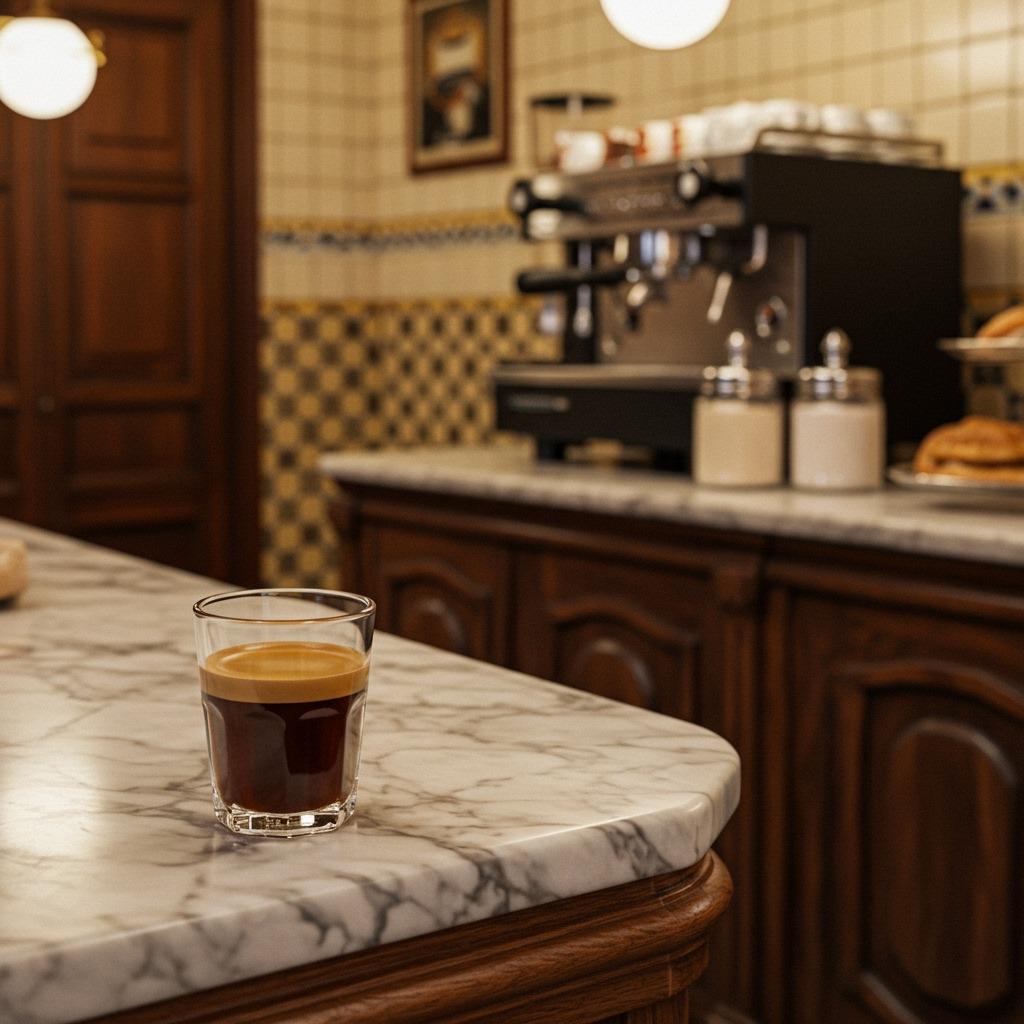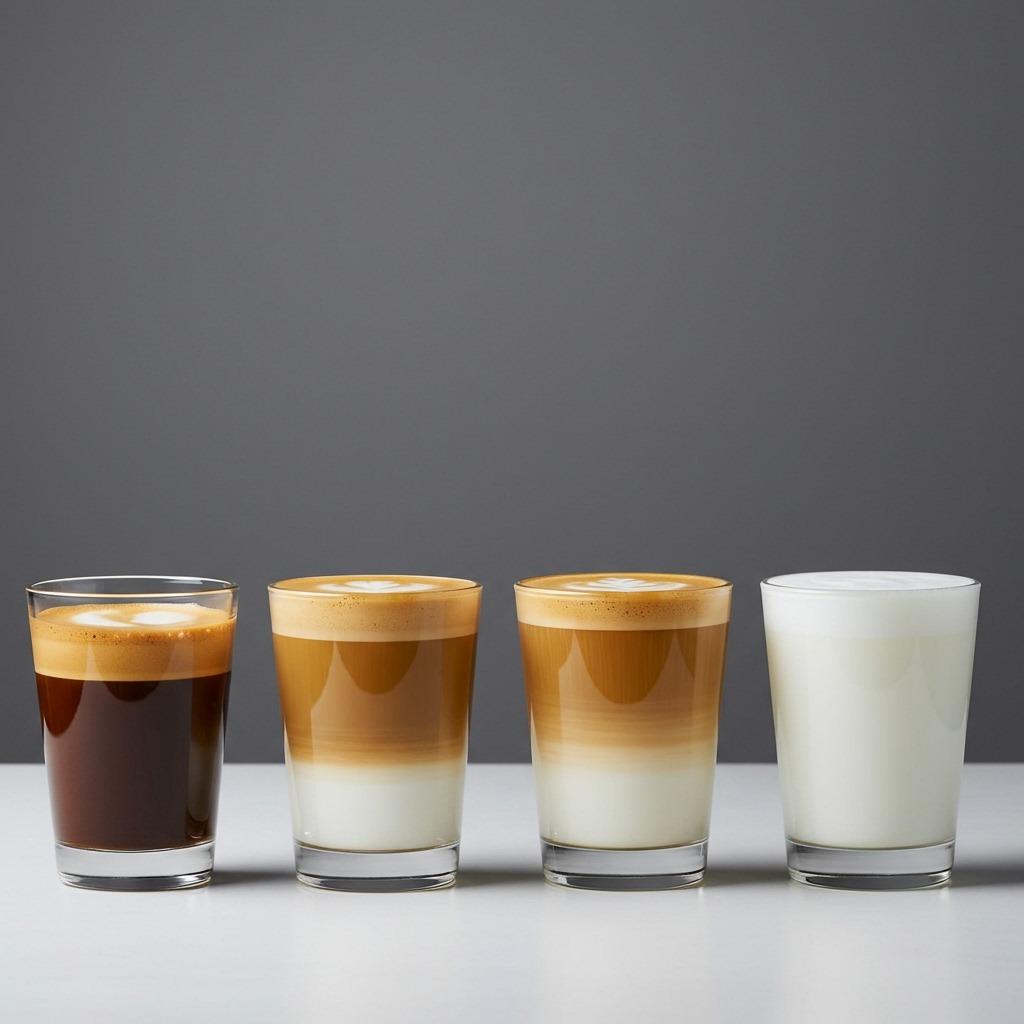That first sip of a perfectly crafted cortado—rich espresso balanced with silky steamed milk—is pure coffee magic. I discovered this Spanish treasure during a rainy morning at a Barcelona café, watching locals sip their cortados while reading newspapers. The barista’s precise movements, the gentle hiss of the steam wand, and that golden-brown crema swirling into warm milk created something extraordinary. If you’re a coffee lover seeking the perfect balance between espresso intensity and creamy smoothness, the cortado might just become your new obsession.
Before we dive deep into cortado mastery, understanding different coffee styles can elevate your entire brewing experience. Check out our guide on what drip coffee is to explore another classic brewing method that pairs beautifully with cortado knowledge.
The Spanish Origins of Cortado Coffee
The cortado originated in Spain’s Basque Country during the mid-20th century, born from a simple desire to tame espresso’s intensity without overwhelming its character. Spanish workers needed something stronger than a café con leche but gentler than straight espresso—and the cortado was born.
The name comes from the Spanish verb “cortar,” meaning “to cut.” The steamed milk literally “cuts” through the espresso’s boldness, creating harmony rather than masking the coffee’s natural flavors. This wasn’t just about taste—it was about creating a drink that Spanish workers could savor quickly during their busy days.

What Makes a Cortado Special: The Perfect 1:1 Ratio
A cortado is deceptively simple yet requires precision. The magic lies in its equal parts formula—typically 2 ounces of espresso paired with 2 ounces of steamed milk. This 1:1 ratio creates the perfect balance where neither ingredient dominates.
The Espresso Foundation
The cortado starts with a double shot of espresso, extracted to perfection with rich crema floating on top. The espresso should be bold enough to hold its own against the milk yet smooth enough to create harmony. Quality beans and proper extraction timing are crucial—over-extracted espresso turns bitter, while under-extracted shots taste sour.
The Milk Component
Unlike other milk-based drinks, a cortado uses lightly steamed milk heated to around 130-150°F. The goal isn’t thick foam but rather microfoam that integrates seamlessly with the espresso. This creates a velvety texture without the heavy foam cap found in cappuccinos.
Cortado vs Other Coffee Drinks: Understanding the Differences
Coffee drink confusion is real, especially when cortados, cappuccinos, and flat whites all look similar. Here’s how to distinguish them:
Cortado vs Cappuccino
Cappuccinos are larger (6-8 ounces) with thick, dry foam on top. Cortados are smaller with integrated microfoam throughout. The cappuccino’s foam creates a distinct layer, while the cortado’s milk blends completely with the espresso.
Cortado vs Flat White
Flat whites typically use a 1:3 ratio (espresso to milk) and are served in larger cups. Cortados maintain their 1:1 ratio and smaller size, resulting in a more intense coffee flavor.
Cortado vs Macchiato
Traditional macchiatos are espresso “stained” with just a dollop of foamed milk. Cortados use equal parts milk, creating a completely different drink experience.
Cortado vs Latte
Lattes are much larger (8-12 ounces) with a 1:6 ratio of espresso to milk. The cortado’s smaller size and higher coffee concentration deliver a bolder taste.
For coffee enthusiasts who appreciate precision in brewing, explore our comprehensive guide on how to make French press coffee for another method that emphasizes coffee-to-water ratios.

How to Make a Perfect Cortado at Home
Creating café-quality cortados at home requires technique, but it’s absolutely achievable with the right approach and equipment.
Equipment You’ll Need
- Espresso machine with steam wand (or alternative brewing method)
- Coffee grinder for fresh beans
- Small glass or ceramic cup (4-6 oz capacity)
- Milk steaming pitcher
- Kitchen scale for precision
Step-by-Step Cortado Recipe
1. Grind Your Coffee Beans
Use a fine grind suitable for espresso. Aim for 18-20 grams of coffee for a double shot.
2. Extract the Espresso
Pull a double shot (2 ounces) with rich, golden crema. The extraction should take 25-30 seconds.
3. Steam the Milk
Pour 2 ounces of cold milk into your steaming pitcher. Heat to 130-150°F while creating microfoam. The milk should have a velvety, paint-like consistency.
4. Pour and Combine
Pour the steamed milk into the espresso, starting from a height to break through the crema, then bring the pitcher closer to create a smooth finish.
5. Serve Immediately
Cortados are best enjoyed fresh while the temperatures are perfectly balanced.
According to the Specialty Coffee Association, proper milk steaming technique is crucial for achieving the cortado’s signature smooth integration between espresso and milk.
The Art of Milk Steaming for Cortados
Milk steaming separates good cortados from great ones. Unlike cappuccinos that need thick foam, cortados require microfoam that integrates seamlessly.
Temperature Control
Heat milk to 130-150°F—hot enough to enhance sweetness but not so hot that it scalds. Overheated milk loses its natural sweetness and creates an unpleasant texture.
Texture Goals
Aim for microfoam with tiny, barely visible bubbles. The milk should have a glossy, paint-like consistency that flows smoothly when poured. Avoid large bubbles or thick foam that sits on top.
Pouring Technique
Start pouring from a height to penetrate the crema, then bring the pitcher close to the cup’s surface. This creates the perfect integration between milk and espresso without distinct layers.

Regional Variations and Global Adaptations
While Spain created the cortado, different regions have developed their own interpretations:
Spanish Cortado
The original version uses equal parts espresso and steamed milk, served in small glasses at a moderate temperature.
Cuban Cortadito
Cuban versions often include sugar mixed directly into the espresso before adding milk, creating a sweeter profile.
Portuguese Pingo
Portugal’s similar drink uses slightly more milk and is sometimes served with a small cookie or pastry.
American Cortado
Many U.S. coffee shops serve larger versions or add flavor syrups, though purists prefer the traditional Spanish approach.
If you’re interested in exploring more international coffee traditions, our guide on what is mocha coffee covers another globally beloved coffee drink with interesting regional variations.
Best Coffee Beans for Cortados
Bean selection dramatically impacts cortado quality. The 1:1 ratio means your espresso needs to shine alongside milk without being overpowered.
Recommended Roast Levels
Medium roasts work beautifully in cortados, providing balanced acidity and sweetness that complements milk. Medium-dark roasts offer more body and chocolate notes that create rich, satisfying cortados.
Origin Characteristics
- Brazilian beans: Nutty, chocolatey notes that pair perfectly with milk
- Colombian coffee: Balanced acidity with caramel sweetness
- Ethiopian beans: Bright, fruity notes for more complex cortados
- Guatemalan coffee: Full body with spice notes that hold up to milk
Blend vs Single Origin
Espresso blends often work better for cortados since they’re designed to balance multiple flavor components. However, single-origin beans can create unique, terroir-driven cortados for adventurous coffee lovers.
Common Cortado Mistakes and How to Avoid Them
Even experienced home baristas make cortado errors. Here are the most common pitfalls:
Over-Steaming the Milk
Milk heated above 160°F loses sweetness and creates an unpleasant texture. Invest in a milk thermometer until you can judge temperature by touch.
Wrong Espresso Extraction
Rushed or poorly extracted espresso ruins cortados. Take time to dial in your grinder and extraction timing.
Incorrect Ratios
Adding too much milk creates a weak latte; too little milk fails to balance the espresso’s intensity.
Serving Temperature Issues
Cortados should be served immediately while both components are at optimal temperature. Delayed service creates separation and temperature imbalance.
Using the Wrong Cup
Traditional cortados are served in small glass cups that showcase the drink’s color and allow for proper temperature enjoyment.
Cortado Culture: When and How to Enjoy
In Spain, cortados are typically enjoyed mid-morning or early afternoon, often paired with a small pastry or cookie. They’re meant for quick consumption while standing at the bar, not lingering over like larger coffee drinks.
Pairing Suggestions
- Morning: With croissants or magdalenas (Spanish sponge cakes)
- Afternoon: Alongside churros or simple butter cookies
- Evening: As a post-dinner digestif with dark chocolate
Social Aspects
Cortados represent Spain’s café culture—quick, social, and focused on quality over quantity. They’re conversation starters, perfect for brief encounters with friends or colleagues.
For those who enjoy coffee as part of outdoor adventures, check out our guide on camping breakfast ideas to see how coffee traditions translate to outdoor experiences.
Health Benefits and Nutritional Information
Cortados offer a moderate caffeine boost with added nutritional benefits from milk:
Caffeine Content
A typical cortado contains 125-136mg of caffeine from the double espresso shot—less than a large drip coffee but more than a single shot drink.
Nutritional Profile
- Calories: 60-80 (depending on milk type)
- Protein: 3-4 grams from milk
- Calcium: A Significant amount from steamed milk
- Antioxidants: From quality coffee beans
Milk Alternatives
Modern cortados work well with oat milk, almond milk, or other plant-based alternatives, though steaming properties vary by brand and type.
The Future of Cortado Culture
Cortados have gained international popularity as coffee culture becomes more sophisticated. Third-wave coffee shops worldwide now serve authentic cortados, and home brewing equipment makes them accessible to everyone.
Specialty Coffee Movement
The cortado’s emphasis on balance and quality aligns perfectly with specialty coffee values. As consumers become more educated about coffee, drinks like cortados that showcase both espresso and milk techniques gain appreciation.
Innovation and Tradition
While purists maintain traditional preparation methods, innovative baristas experiment with different milk alternatives, seasonal variations, and artistic presentations while respecting the drink’s core identity.
For more insights into coffee culture and brewing techniques, Serious Eats provides excellent resources on specialty coffee preparation and appreciation.
Mastering Your Cortado Journey
The cortado represents everything beautiful about coffee culture—simplicity executed with precision, tradition respected through technique, and flavor balanced through understanding. Whether you’re sipping one in a Spanish café or crafting the perfect version at home, each cortado is an opportunity to appreciate coffee’s versatility and milk’s complementary properties.
Remember that perfection comes through practice. Start with quality beans, focus on consistent technique, and don’t be afraid to adjust ratios until you find your personal cortado preference.
For comprehensive coffee brewing guidance and techniques, James Hoffmann’s resources offer expert-level insights into espresso and milk-based drink preparation.
Frequently Asked Questions About Cortado Coffee
Q1: What’s the difference between a cortado and a cappuccino?
A cortado uses equal parts espresso and steamed milk (typically 2oz each) with integrated microfoam, while cappuccinos are larger with distinct layers of espresso, steamed milk, and thick foam on top. Cortados have a stronger coffee flavor due to the higher coffee-to-milk ratio.
Q2: Can I make a cortado without an espresso machine?
Yes! Use a Moka pot, AeroPress, or strong French press coffee as your base. Heat and froth milk using a French press plunger method or a milk frother. While it won’t be identical to espresso-based cortados, you can achieve a similar balance and flavor.
Q3: What type of milk works best for cortados?
Whole milk creates the creamiest texture and best integration with espresso. However, 2% milk works well too. For plant-based options, oat milk steams most similarly to dairy milk, while almond and soy milk require more careful temperature control.
Q4: How should I serve a cortado?
Serve cortados in small 4-6 ounce glasses or ceramic cups immediately after preparation. The traditional Spanish approach uses small glass cups that showcase the drink’s color and maintain proper temperature.
Q5: What’s the best time of day to drink a cortado?
In Spanish culture, cortados are typically enjoyed mid-morning (around 10-11 AM) or early afternoon. The moderate size and balanced caffeine content make them perfect for a mid-day coffee break without the heaviness of larger milk drinks.
